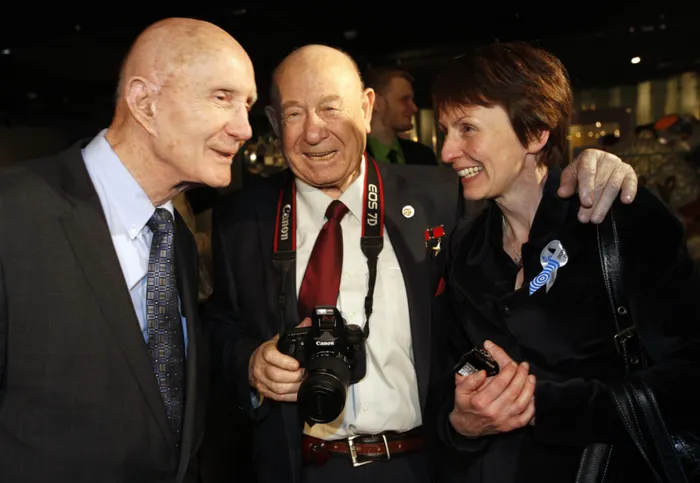Celebrating Russia's space programme

US astronaut Thomas Stafford, Russian cosmonaut Alexei Leonov and British astronaut Helen Sharman visit an exhibition dedicated to the 50th anniversary of the first man in space, Russia's Yuri Gagarin, in Moscow. US astronaut Thomas Stafford, Russian cosmonaut Alexei Leonov and British astronaut Helen Sharman visit an exhibition dedicated to the 50th anniversary of the first man in space, Russia's Yuri Gagarin, in Moscow.
London - The first man to walk in space launched a landmark Science Museum exhibition in London devoted to Russia's pioneering space programme - by expressing surprise that his country had agreed to hand over the exhibits.
The show, which took five years to put together, explores the idea that the Russian space programme is “one of the great cultural, scientific and engineering achievements of the 20th century”, according to the museum's director, Ian Blatchford.
“Cosmonauts: Birth of the Space Age” features around 150 significant loans from Russia. Most have never left the country before, and few have been seen even by Russians. Many needed special security declassification.
Mr Blatchford said he hoped the exhibition would be “to science history what the great Tutankhamun exhibition at the British Museum was to archaeology”. The 1972 exhibition was the most popular in the museum's history and seen by 1.7 million people.
Exhibits include the 1903 notebook of a pioneering rocket engineer dubbed the “Tolstoy” of the Russian space programme. The public will be able to inspect the craft which took the first woman cosmonaut in and out of orbit.
Special guest at the exhibition announcement was former cosmonaut Alexei Leonov, who 50 years ago became the first man to conduct a spacewalk, on the Voskhod 2 mission. Now 80, he said the array of material lent was remarkable when London-Moscow relations are strained. “I didn't know the efforts you went to for the exhibits,” he said. “It's quite a surprise they lent them to you.”
Among the extraordinary loans is the Voskhod 1 descent module, which weighs 2.6 tons, and brought three cosmonauts back from space in 1965. It was the first time more than one person had been sent into orbit. The Vostok 6 spacecraft will also be on display. It carried Valentina Tereshkova, into and back from orbit. The eight-foot capsule is charred and burned, scars from its 17 000mph re-entry into the earth's atmosphere.
The exhibition will show several of Mr Leonov's items. A talented artist, he sketched the rising sun while he was in orbit in March 1965, which will be on display, as will the pencils he used, specially fitted to a rubber ring to stop them floating off in the weightless conditions.
He spoke of the flight: “There were many problems during my first flight. Many of those were impossible to test on earth, for example how would the spacesuit react in the vacuum of space? But I had to do it.”
Newer exhibits on display will include the suit worn by Britain's first cosmonaut, Helen Sharman. She wore it for her flights to the Mir space station as part of the Soviet Juno Mission in 1991.
“Helen Sharman was one of my pupils,” Mr Leonov said. “She is a wonderful astronaut… you should be proud.”
The Independent